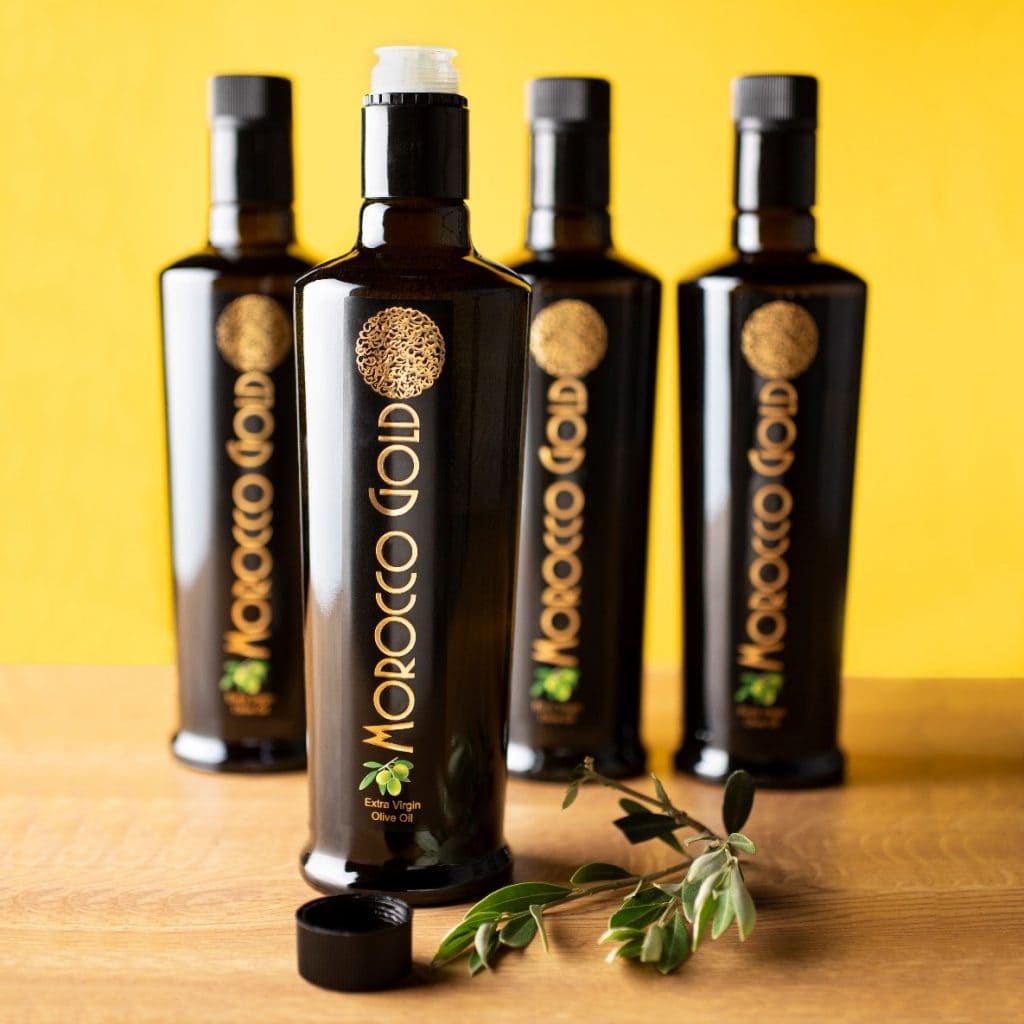Olive Oil Sommelier And Others Share Their Secrets To The Best Olive Oil

Summary
Contents
Olive Oil Sommelier Lists Which Olive Oils Are The Healthiest And Why
A top olive oil sommelier has shared her insight on what makes the healthiest olive oil and how you can make the best choice in your olive oil for cooking.
Speaking with Stylist magazine, Sarah Vachon, an olive oil sommelier and founder of the olive oil subscription service Citizens of Soil explained about the world of olive oil and what we should be looking for on the shelf.
The good news for Morocco Gold and our wonderful customers is that Sarah indicated a need to stick to extra virgin olive oils to ensure the best health benefits from olive oil. She said:
“Extra virgin olive oil has been a superfood since antiquity and has been celebrated for its healing and nutritional powers for just as long.
“Extra virgin olive oil is just the juice of crushed and squeezed olives. By law, it must be produced without heat or chemicals, which is what separates it from all the other edible oils. It’s a vibrant, fresh product teeming with antioxidants and has proven health benefits.”
The Importance Of Olive Oil Production Methods
At Morocco Gold, we are especially proud of how our extra virgin olive oil is produced – a vital component in what makes the best olive oil – says Sarah.
Vachon adds: “Outside the virgin olive oil category, most olive oils are refined, highly processed, bleached and deodorised – all aimed at creating a shelf-stable, lifeless oil at a lower cost.
“Comparing virgin and regular olive oil is like comparing freshly squeezed orange juice to orange soda. One provides nutrition on multiple levels, while the other… well, it’s soda.”
In order to be classified extra virgin olive oil, producers have to follow a very strict set of rules and processes at each stage of their olive oil production. Vachon summarises this to Stylist magazine:
“Virgin olive oil is made the same way as extra virgin – crafted without the use of heat, chemicals or solvents,”
“Both are produced through purely mechanical processes – crushing, squeezing and extracting the juice from the olives.
“The difference is that extra virgin olive oil undergoes a lab and sensory analysis to determine its quality and ensure there aren’t any defects. In the case of virgin, the olives going in might not be as high quality or the milling might not be as clean or precise, and that can lower the grade. This is why we often liken extra virgin olive oil to a fresh fruit juice: it undergoes no further heat or chemical treatments. It remains vibrant, teeming with antioxidants and boasts a shelf-life of approximately 18–24 months when unopened.”
This detailed process ensures that virgin olive oils retains the most health benefits which can be enjoyed by consumers who take the effort to search for the best.
What are some of the signs of a good healthy olive oil?
According to Vachon, there are three distinct giveaways which can tell you how healthy an olive oil is, saying;
“It’s best to pour a little of the oil into a small cup or wine glass to swirl around and have a smell, followed by a taste.”
This allows you to determine the three following taste clues, which are;
1. Fruitiness
“This quality is called ‘fruitiness’ in the olive oil space, but it doesn’t actually just mean a fruity smell or flavour,” Vachon says. “Extra virgin olive oil should smell ‘alive’ – so not like an old book, metallic or waxy. Instead, we’re looking for plant aromas. Common ones here include things like fresh-cut grass, herbs, tomatoes, artichokes and apples.”
2. Bitterness
“This sensation can range from a sharp astringency to something slight on the palate,” Vachon says. “It often gives olive oil that ‘boldness’ or robustness that people associate with some oils from the south of Italy or Tuscany. But it can also be mild with only a small indication – and that’s OK, too. Bitterness isn’t required to be strong in an award-winning oil, but it is considered a positive attribute for extra virgin olive oil to have.”
3. Pepperiness (often called pungency)
“Whether it’s a little tingle in the back of the throat or causes a full-on coughing fit, that pepperiness represents so much,” Vachon explains. “It can feel like cracked black pepper or even a full-on chilli and comes from the presence of the oleocanthal.”
How Does Morocco Gold Extra Virgin Olive Oil Fair On The Healthy Scale?
Morocco Gold extra virgin olive oil comes from a truly unique source where the unique micro-climate and geological conditions provide the perfect conditions for growing the Picholine Marrocaine, the only type of olive used for Morocco Gold.
Morocco Gold extra virgin olive oil is high in polyphenols. This is due to three factors. First is the variety of the olive, secondly the climate and terroire of the growing region and thirdly our olives are harvested early in the season when the fruit is young.
Our olives are grown in a valley that is about 2,000 feet above sea level. This helps to create the additional climatic challenges that encourage polyphenol uptake within the olive tree. It is also an area with naturally occurring high phenols in the soil itself.
In soils, phenols are released over extended period of time from decomposing plant materials. This causes complex organic compounds to be slowly oxidized or to break down into simpler forms of sugars, amino sugars, aliphatic and phenolic organic acids. These are further transformed into microbial biomass or are reorganized, and further oxidized, into humic assemblages (fulvic and humic acids), which bind to clay minerals.
Thirdly, our olives are picked when the fruit is young and green. As the olives age on the tree, the colour of the olive changes to red and then black, the size of the olive increases thus producing more oil, but the polyphenol level decreases. There is a great deal of expertise within the farming community where we source our oil to ensure that the harvest is collected at the optimum time to maximise the polyphenol level.
